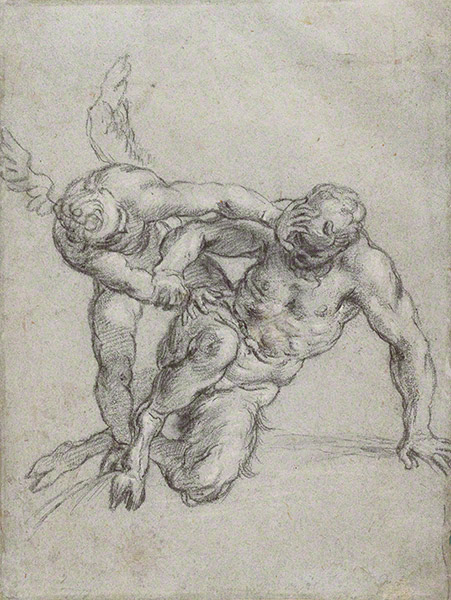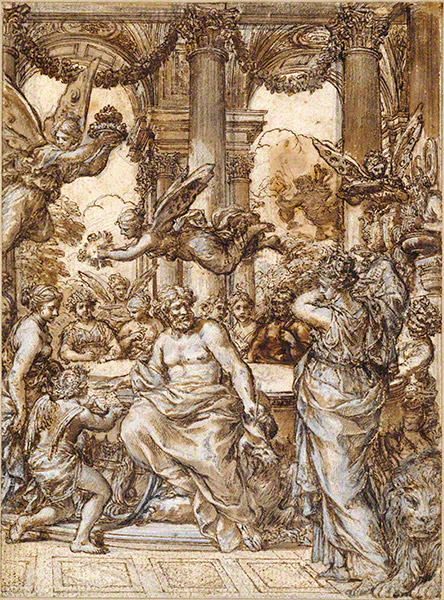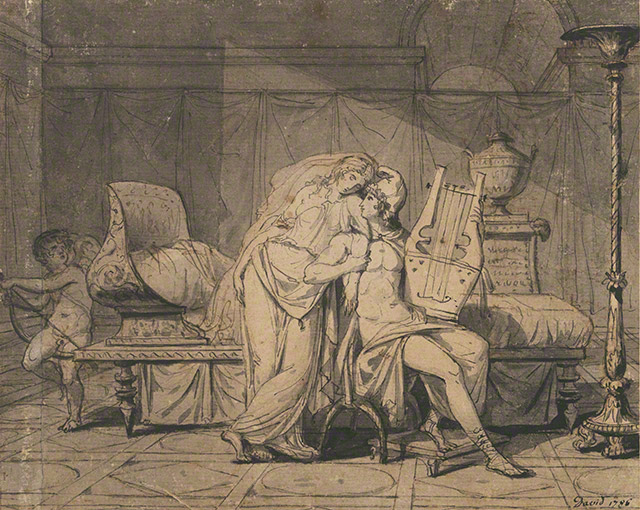Gods and Heroes
Presenting drawings from the 1400s to the 1800s, this exhibition looks at some of the mythological stories and characters that have been central to Western culture.
Loading the video
How does the artist portray these figures with both human and godlike attributes?
The colorful myths and legends of Greco-Roman antiquity have fired the imaginations of generations of European draftsmen, testing their abilities to represent complex narratives through graphic means. Depending on when and where they worked, artists have approached these subjects very differently, sometimes tackling them as pretexts for visual experimentation.
Loading the video
Hear the curator discuss details of the drawing that underscore its grandeur and theatricality.
The classical gods and heroes have proved all the more fascinating because they were powerful but imperfect. Involved in love and lust, rivalry and treachery, crime and punishment, they featured all the passions and flaws of mortals yet on a much larger scale.
This drawing illustrates a treatise on floriculture, and depicts the mythical Council of the Gods agreeing that Flora, a deity of blooming plants, should help the nature goddess Cybele grow flowers on earth. Cybele—accompanied by her attribute, a lion—approaches the supreme ruler Jupiter in the center of the composition, who passes an edict to the wind god Zephyr, kneeling at left. The great precision and refinement of the drawing is in keeping with the erudite tone of the book for which it was created.
Loading the video
Learn how the artist may have chosen this subject matter to make a subtle critique of contemporary aristocratic behavior.
The artist Jacques-Louis David depicts a bittersweet conjugal encounter between Paris, son of the king of Troy, and Helen, daughter of the king of Sparta. According to legend, Paris abducted Helen, but she fell in love with him after Cupid shot her with an arrow of desire—events that led to the Trojan War. Here she leans tenderly on Paris's shoulder, yet her expression is forlorn. Made in preparation for an oil painting, the scene is set in a palatial interior with ancient furniture that is rendered with archaeological precision.
Loading the video
How does the artist manipulate elements such as light and composition to dramatize the story?
Hercules' eighth labor was to capture the flesh eating mares of Diomedes, an evil king of Thrace. The hero succeeded in seizing the animals and, in an ensuing battle, killed their owner. This drawing depicts the climactic scene in which Hercules—shown high up in the background, between columns—feeds Diomedes' body to his own horses. Moreau situated the atrocious episode in a dim setting that offsets the brilliant tones of the delicately executed watercolor and adds an eerie quality to the composition.
Publication
Gods and Heroes in Art
Lucia Impelluso
Lucia Impelluso





